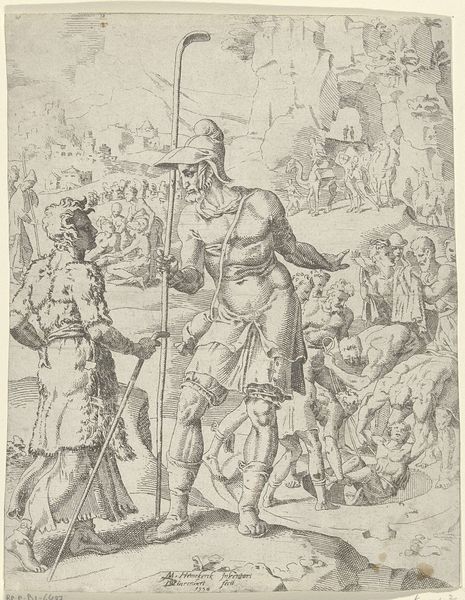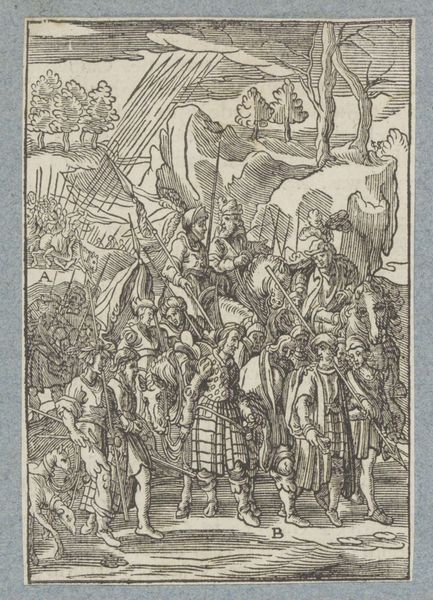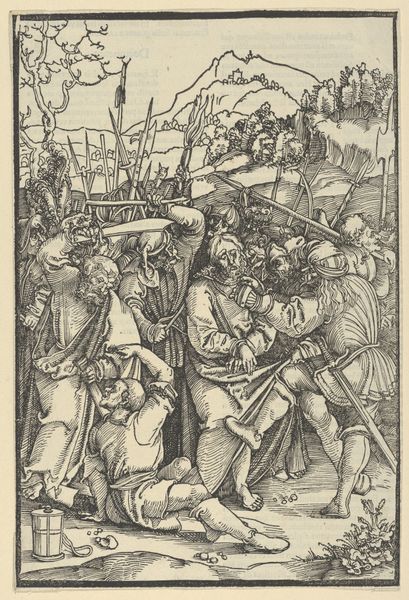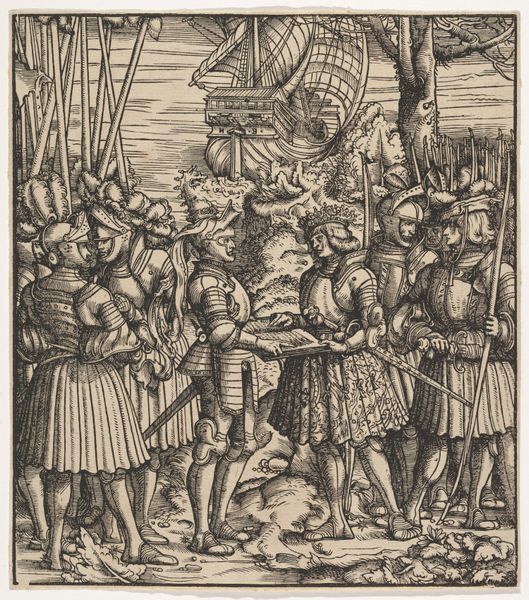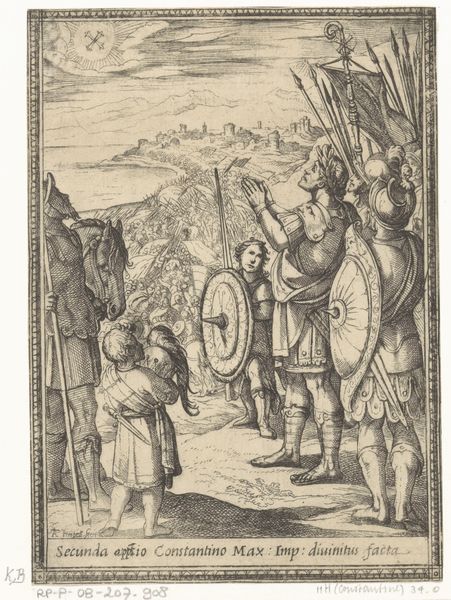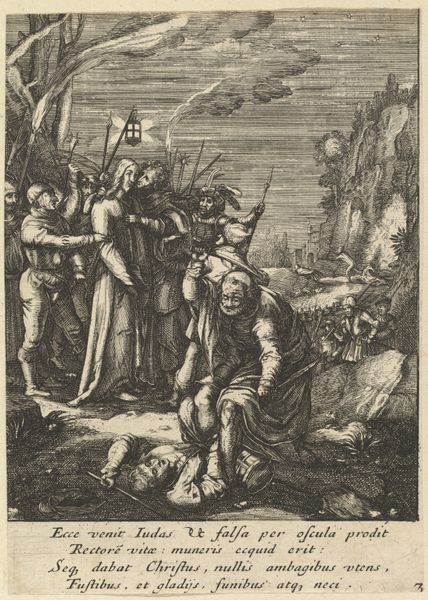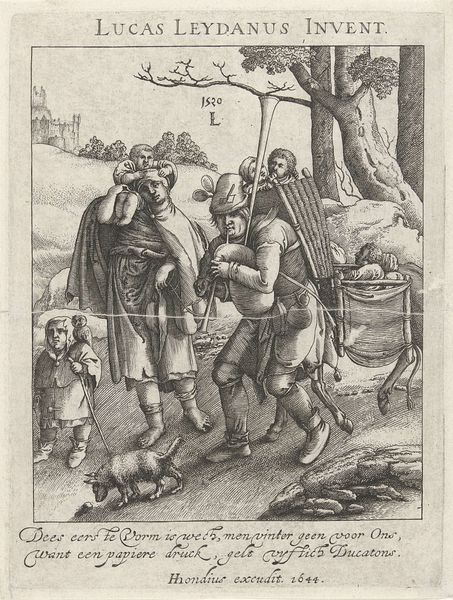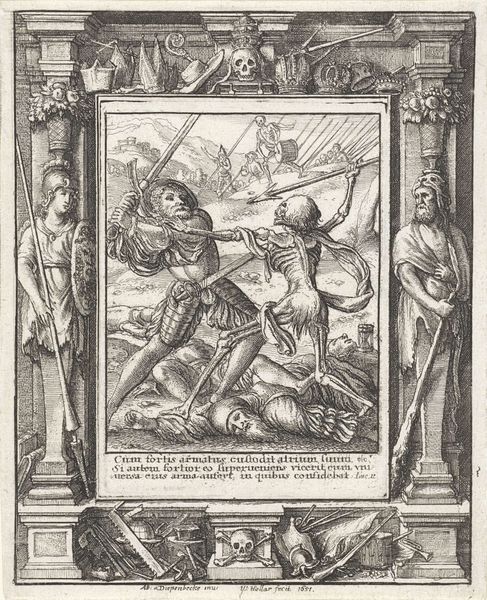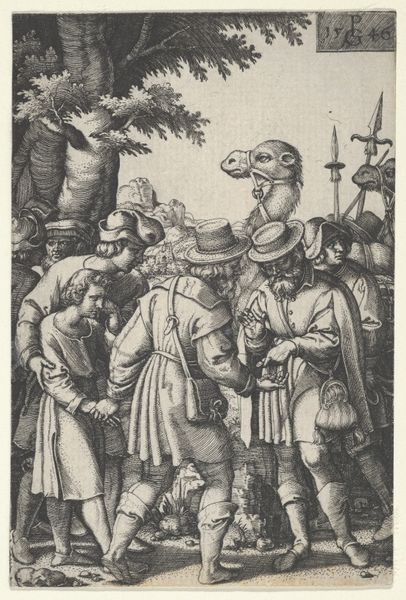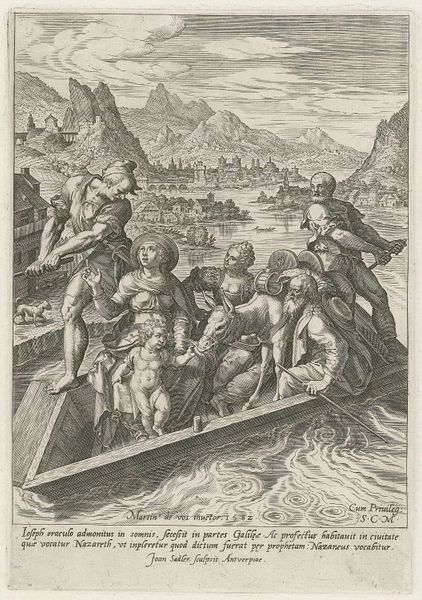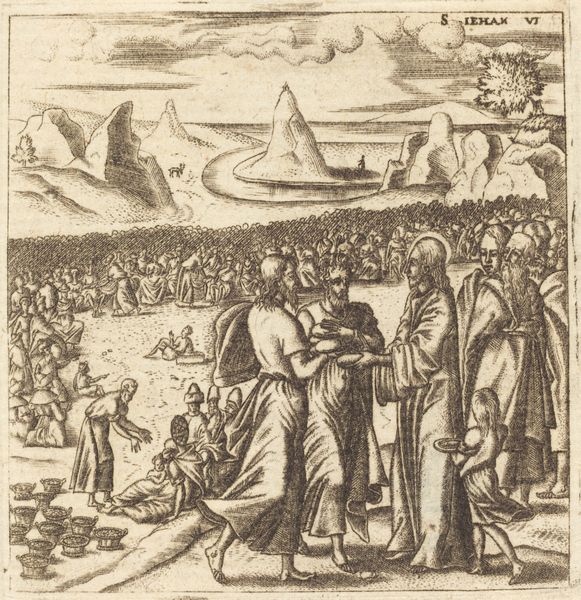
drawing, print, ink, engraving
#
drawing
#
narrative-art
#
baroque
#
pen drawing
# print
#
pen illustration
#
old engraving style
#
ink
#
history-painting
#
italian-renaissance
#
engraving
Dimensions: height 179 mm, width 125 mm
Copyright: Rijks Museum: Open Domain
Curator: Here we have an engraving entitled "Het teken van het kruis verschijnt aan Constantijn," which translates to "The sign of the cross appears to Constantine." It’s attributed to Antonio Tempesta and thought to have been created sometime between 1565 and 1630. Editor: It's quite striking, visually. The contrast between light and shadow creates a dramatic effect, particularly around Constantine himself and the symbol appearing in the sky. The artist does a superb job rendering an army marching across a complex landscape. Curator: Indeed. Tempesta was known for his narrative scenes, often filled with dynamism and many figures. This print illustrates a pivotal moment: Constantine’s vision before the Battle of the Milvian Bridge. Editor: It’s interesting to consider how Constantine's conversion became so central to European history and the political power of the church. What I find complex about images like these is their reliance on a narrative that obscures as much as it reveals. Constantine's rise involved consolidating power through any means necessary, which obviously presents real issues with the narrative this work endorses. Curator: It certainly raises those considerations. What I find noteworthy here is how Tempesta is employing Baroque aesthetics, known for grandeur, emotional intensity, and its propagandistic use by institutions such as the Catholic Church, here framing Constantine's religious experience. Editor: Right, and that promotion serves a very particular social and political agenda, influencing people to submit to the church’s version of history. And the formal elements – the strategic placement of figures and that striking chiaroscuro we spoke of – directly enhance that agenda. It brings a sharp focus on the narrative but simultaneously closes off ways to question what this even suggests, and that impacts how we still view and relate to it now. Curator: Looking at this from the museum perspective, it's our role to contextualize such a work – its creation, dissemination, and how it functioned within its historical setting to allow today's viewers to fully interrogate these dynamics you address. Editor: Agreed. Exploring these nuances offers crucial lessons in deconstructing dominant narratives. I wonder what futures we might unlock if we continue critically examining such artworks, to allow it to push social consciousness for the sake of genuine human progress?
Comments
No comments
Be the first to comment and join the conversation on the ultimate creative platform.
